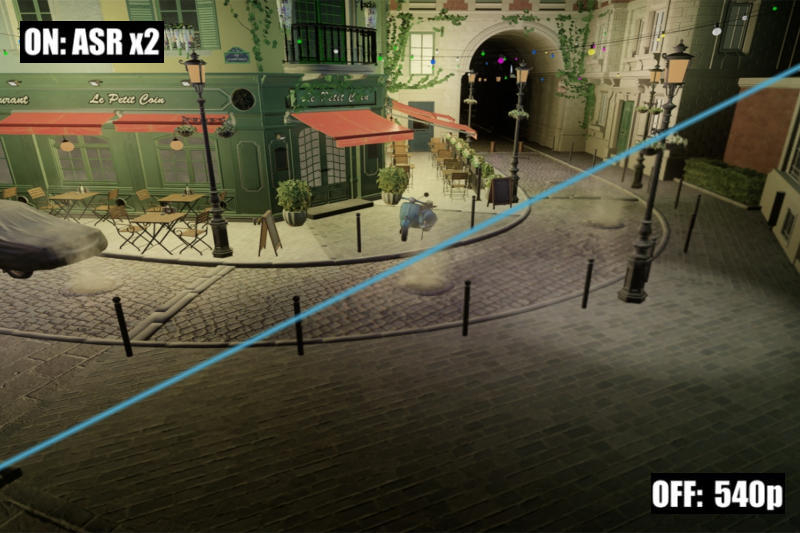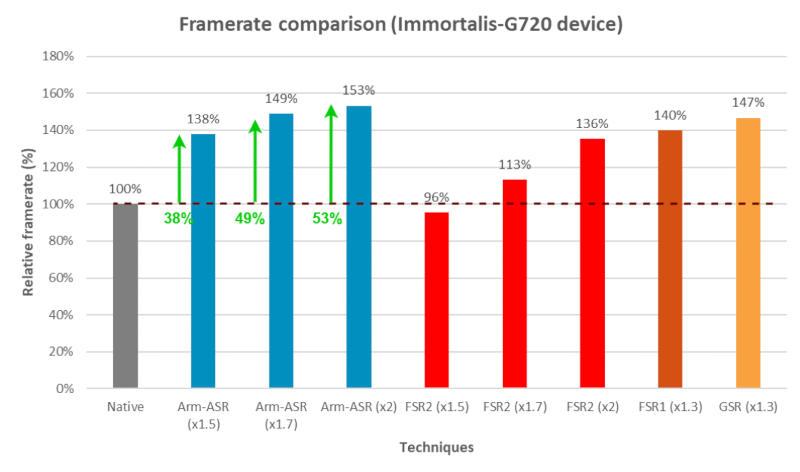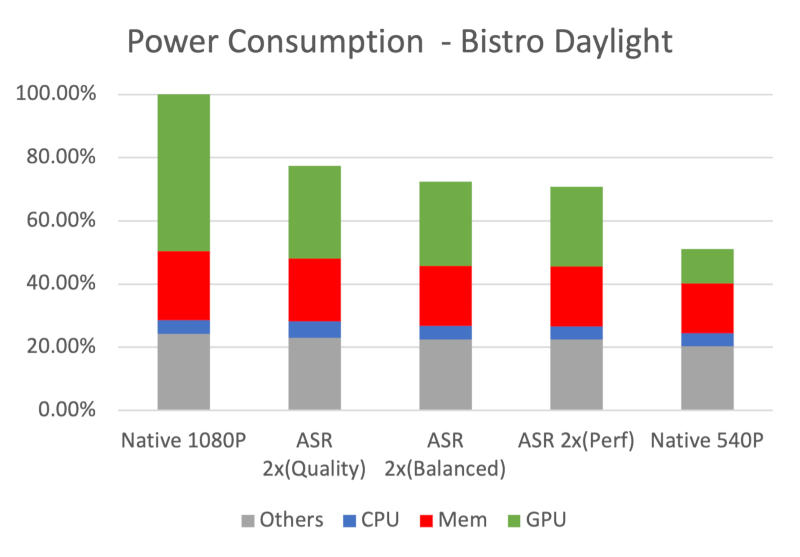Arm introduced its own scaling technology based on AMD FSR2 – the new solution is called Arm Accuracy Super Resolution (Arm ASR). And if FSR2 is intended for PCs and powerful consoles, then the implementation of Arm’s time scaling technology is aimed at mobile devices with modest performance indicators. Arm has also published the source code of its solution to save developers from licensing costs.

Image source: Arm
Arm chips are traditionally used in smartphones and tablets – they have small screens with lower resolutions, so they do not need scaling. But recently, the scope of application of these processors has expanded – they have migrated to desktops and laptops; Meanwhile, AAA games that were previously the preserve of gaming PCs and consoles are now coming to mobile devices.

Optimized for mobile devices, Arm ASR performs more efficiently than AMD FSR2. Arm tested on the Immortalis-G720 GPU at 2800 x 1260 pixels and found that ASR delivered a 53 percent frame rate boost at 2x scaling, compared to 36 percent for FSR2. The company also tested its technology with the MediaTek Dimensity 9300 chip – 2x upscaling resulted in a 20% reduction in power consumption compared to rendering the same scene at native 1080p resolution. This means that gamers will have more time to play mobile games, and skipping cycles when the processor overheats will occur less frequently.

This is not the first such solution for mobile devices – last year Qualcomm introduced its own Snapdragon Game Super Resolution technology. But Qualcomm’s solution uses spatial scaling – it prioritizes performance over quality; and Arm ASR uses timing and game engine integration to improve picture quality. Arm ASR may also be useful for Microsoft Copilot+ PCs that use Arm processors. Microsoft also has its own Automatic Super Resolution (Auto SR) scaling technology – it does not provide the same quality as Arm technology, but it works on the basis of an AI accelerator (NPU), which means that its scope is still limited to the same Copilot+ PC.
An important advantage of Arm ASR is that it is already familiar to many developers because it is based on AMD FSR2 – experienced programmers will quickly understand the Arm ASR API and configuration parameters. And an open source license will make it easier to implement the technology for cross-platform games.